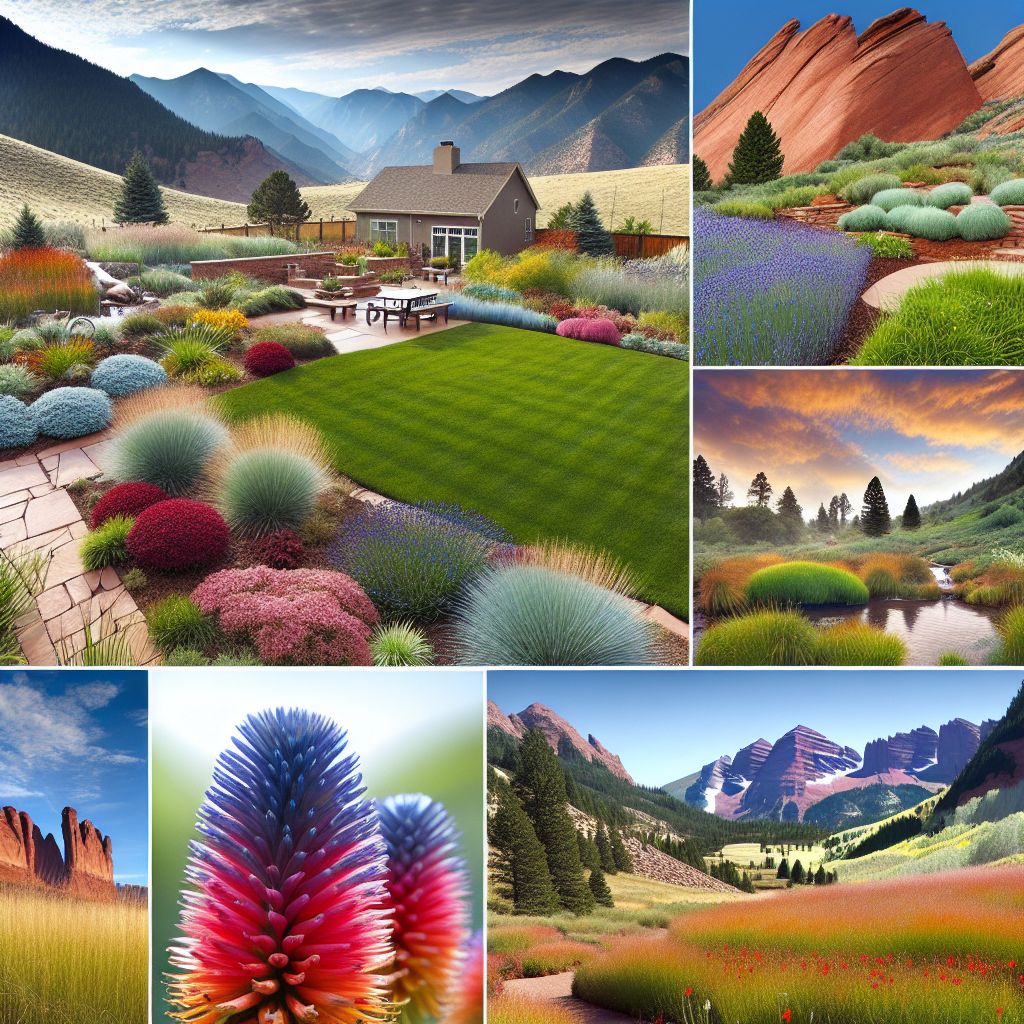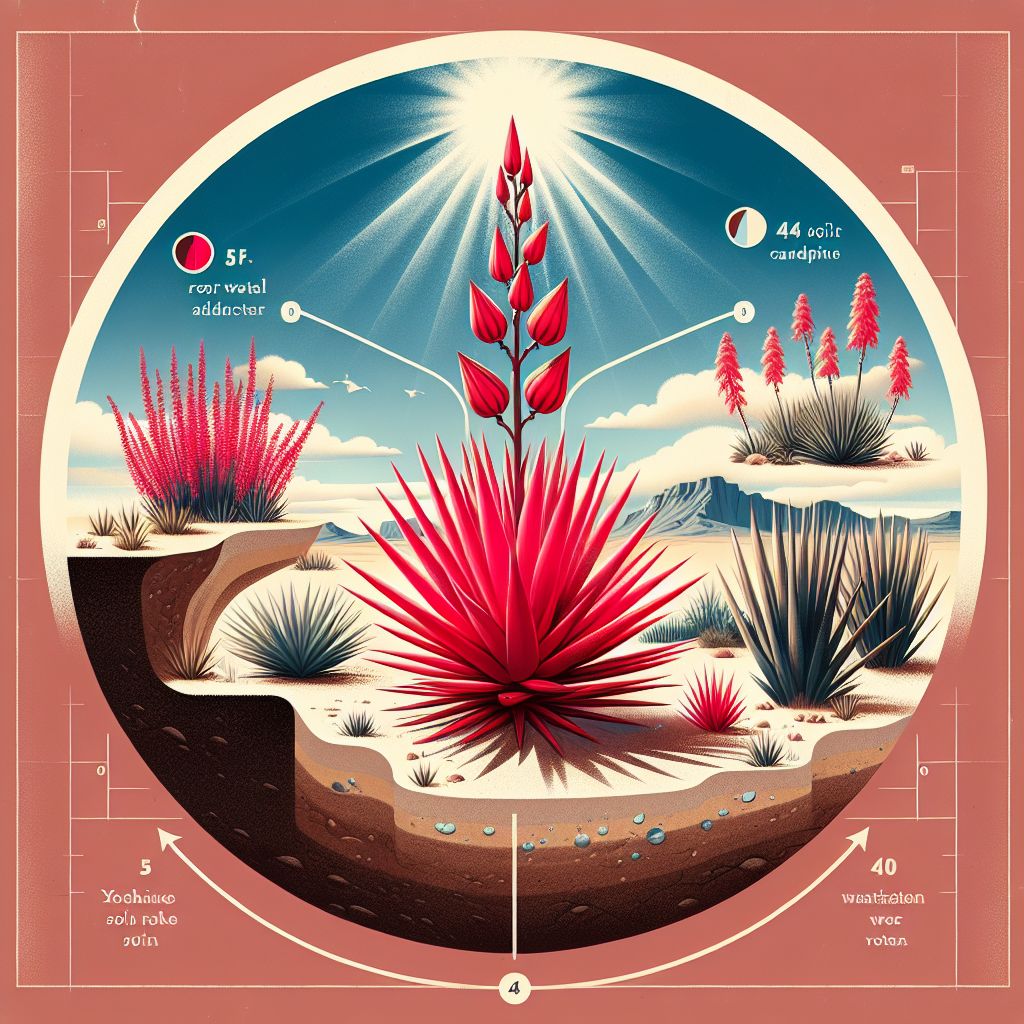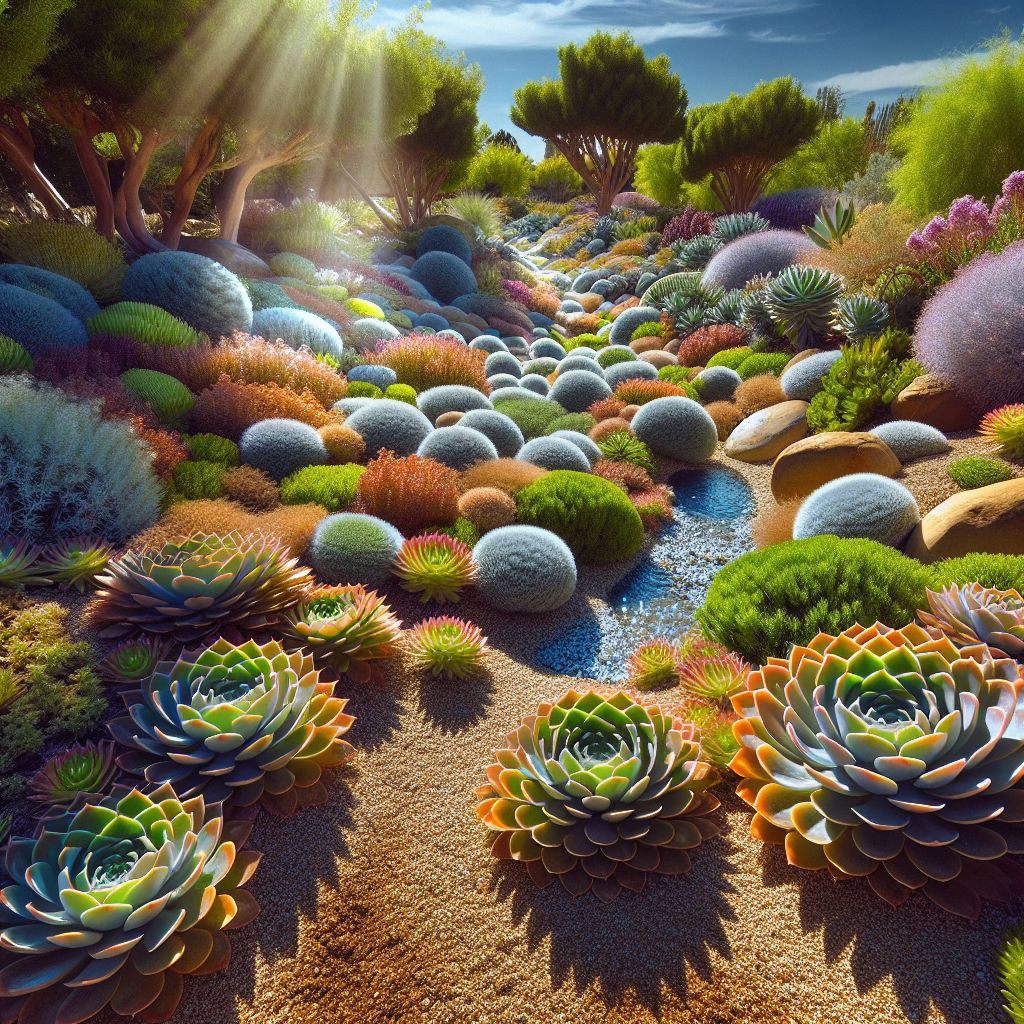
Article-at-a-Glance
- Discover how native plants can transform your Colorado yard into a low-maintenance oasis.
- Learn the benefits of
and other water-saving strategies for sustainable landscaping. - Get to know the best plants for Colorado climates, their care, and their contribution to local ecology.
- Understand the simple maintenance routines that keep your native landscape thriving.
- Explore cost-effective ways to create a stunning yard that aligns with Colorado’s natural beauty.
Embrace Colorado’s Beauty: Native Plants and Alternatives to Lawn
Think of your outdoor space as a blank canvas. You have the power to create a landscape that not only looks good but also does good. With Colorado’s semi-arid climate, water conservation is key. A traditional grass lawn might be the norm, but it’s not always practical or sustainable. Enter native plants and lawn alternatives like xeriscaping, which can transform your yard into an eco-friendly paradise.
List of Ideal Plants for Colorado Climates
Colorado’s climate can be tricky, with cold winters and hot summers, not to mention the occasional drought. This means that the plants you choose must be tough. Some of the best options include:
- Blanketflower (Gaillardia aristata): A vibrant perennial that brings a pop of color with its red and yellow flowers.
- Blue Grama Grass (Bouteloua gracilis): A low-growing grass that’s perfect for a low-water lawn alternative.
- Purple Coneflower (Echinacea purpurea): Not only beautiful, but it’s also a magnet for pollinators like bees and butterflies.
- Pinyon Pine (Pinus edulis): A sturdy tree that’s well-suited for Colorado’s dry conditions.
- Rocky Mountain Penstemon (Penstemon strictus): Offers lovely blue-purple flowers and attracts hummingbirds.
Each of these plants brings something special to the table, from drought tolerance to wildlife support. But remember, the right plant in the right place is your mantra for success.
Simple Maintenance Routines for Resilient Yards
Once your native plants are in the ground, they’ll need some care to get established. But once they’re settled in, your maintenance routine will be a breeze. Here’s what you’ll typically need to do:
- Water new plants regularly until they’re established, then reduce watering as they become more drought-tolerant.
- Prune dead or diseased branches and spent flowers to encourage new growth.
- Add a layer of mulch around plants to conserve moisture and suppress weeds.
That’s it! Native plants are champions at taking care of themselves once they’re acclimated to your yard.
Understanding Your Yard’s Water and Conservation Needs
Water is a precious resource in Colorado, and designing your yard with conservation in mind is essential. Xeriscaping is a fantastic way to do this. It’s a form of landscaping that reduces or eliminates the need for supplemental water from irrigation. This doesn’t mean a yard full of cacti (unless that’s your style); it means choosing plants that thrive with the water Mother Nature provides.
But how do you know how much water your yard needs? Start with a soil test to understand your soil’s water retention capabilities. Then, observe how sunlight and shade move across your yard throughout the day. With this information, you can plan a yard that looks great and conserves water.
Sunlight: Knowing The Best Exposure for Your Garden
Sunlight is like gold for plants, but not all plants crave endless summer days. Some need the gentle touch of morning sun, while others bask in the full glare of midday. As you choose plants for your Colorado yard, consider where the sun shines the brightest and where shadows linger. Plants like the Colorado Blue Columbine (Aquilegia caerulea) love a bit of shade, while the Yucca (Yucca glauca) soaks up the sun.
The Right Soil for Native Plants: Preparing Your Garden
Soil is the foundation of your garden. In Colorado, soils can range from clay to sandy, each with its own set of characteristics. Native plants are adapted to local soils, but that doesn’t mean you can’t give them a better start. Amending your soil with compost can improve its structure, nutrient content, and water-holding capacity. This small step can make a big difference in the health of your plants.
The Lifespan of Colorado’s Native Flora: Planning for Longevity
When you’re planting for the long haul, it’s important to think about the lifespan of your plants. Some perennials, like the Pasque Flower (Pulsatilla patens), may live for several years, while others, like the Rocky Mountain Maple (Acer glabrum), can last for decades. Plan your garden with a mix of short-lived and long-lived plants for a landscape that evolves and changes over time, just like the natural Colorado landscape.
Cost-Effective Landscaping: Balancing Beauty and Budget
Landscaping doesn’t have to break the bank. Native plants are often less expensive to maintain than non-native varieties because they require less water, fertilizer, and pest control. Here’s a quick look at what you might expect to spend on some native Colorado plants:
| Plant | Description | Estimated Cost |
|---|---|---|
| Blanketflower | Drought-tolerant perennial with vibrant red and yellow flowers | $5-$10 per plant |
| Blue Grama Grass | Low-growing grass, ideal for low-water lawns | $2-$5 per plug |
| Purple Coneflower | Attracts pollinators, adds height and color | $8-$15 per plant |
| Pinyon Pine | Sturdy tree for dry conditions | $25-$50 per tree |
| Rocky Mountain Penstemon | Hummingbird attractor with blue-purple flowers | $7-$12 per plant |
As you can see, with a bit of planning, you can create a stunning yard that’s both beautiful and budget-friendly. Stay tuned for more detailed information on native plant profiles and designing your easy-care yard in the upcoming sections.

Native Plant Profiles
Let’s dive deeper into the world of Colorado’s native flora. Each plant has its own story, its unique way of contributing to your garden’s ecosystem. Understanding these plants will help you create a landscape that’s not just a joy to look at but also a cornerstone of the local habitat.
For starters, native plants are the ultimate survivors. They’ve adapted to the local climate and soil conditions over thousands of years, which means they’re well-equipped to handle what Colorado’s weather throws at them. This resilience translates to less fuss for you and more time to simply enjoy your outdoor space.
Why Go Native? Benefits of Local Plant Selection
Choosing native plants isn’t just a trend; it’s a smart gardening decision. These plants require less water, are resistant to local pests and diseases, and provide essential food and shelter for wildlife. They help maintain the region’s ecological balance, supporting everything from soil health to the bees that pollinate our crops.
Plant Spotlight: Thriving Species in Colorado
Take the Rocky Mountain Columbine, for example. This state flower of Colorado is not only stunning with its delicate blue and white petals but also serves as a nectar source for hummingbirds and butterflies. It’s a plant that symbolizes the rugged beauty of the Rockies and brings life to your garden.
Designing Your Easy-Care Yard
Creating a yard that’s both beautiful and easy to care for starts with good design. You’ll want to consider not only the aesthetics but also the functionality of your space. How will you use your yard? Are there areas for entertaining, or quiet corners for relaxation? Your design should reflect the needs of your lifestyle while also being mindful of the local environment.
Another key factor in your design will be the seasons. Colorado’s seasons are distinct, and your landscaping should evolve throughout the year. By choosing a variety of plants that bloom at different times, you can ensure that your yard remains vibrant from spring through fall.
Laying the Foundation: Planning Your Space
Before you put shovel to soil, take a step back and plan. Sketch out your yard, noting areas of full sun, partial shade, and full shade. Consider the flow of water during rainstorms and think about how you can capture that moisture for your plants. This initial planning stage is crucial for creating a yard that’s both functional and sustainable.
The Palette of the Prairie: Color and Texture Considerations
Color and texture bring your garden to life. In Colorado’s landscape, the natural hues of greens, browns, and reds dominate. You can complement these earthy tones with splashes of color from wildflowers like Indian Paintbrush or the fiery reds of the Autumn Blaze Maple. Texture comes from the soft plumes of Ornamental Grasses or the spiky leaves of Yucca plants.
Remember, variety is the spice of life, and this holds true for your garden as well. Mixing plants of different heights, colors, and textures creates a dynamic and visually appealing space.
And don’t forget the winter months. Choose plants like the Colorado Blue Spruce with its evergreen branches or the Red Twig Dogwood, which offers a stunning contrast against the snow with its bright red stems.
Hardscaping: Strategic Use of Non-Plant Elements
Hardscaping is another element of design that can elevate your yard. These are the non-living features like stone paths, patios, and retaining walls. Not only do they add structure to your garden, but they also reduce the amount of grassy area, cutting down on water usage and maintenance. A well-placed boulder or a meandering gravel path can provide the perfect balance to your living plants.
When you incorporate hardscaping, you’re not just thinking about the present. You’re planning for a future where your garden continues to thrive with minimal intervention, allowing you to spend more time enjoying the fruits of your labor.
Sustainable Practices
Incorporating sustainable practices into your landscaping isn’t just good for the environment; it’s also good for your peace of mind. Knowing that your yard is designed in harmony with nature, conserving resources, and providing a habitat for wildlife can be incredibly rewarding.
One of the most effective sustainable practices is composting. By composting your kitchen scraps and yard waste, you’re creating rich soil that can nourish your plants without the need for chemical fertilizers. It’s a simple practice that has profound effects on the health of your garden.
Water-Saving Strategies: Xeriscaping and Beyond
Xeriscaping is a water-saving strategy that’s tailor-made for Colorado’s climate. It involves choosing plants that require minimal irrigation beyond natural rainfall. But it’s more than just plant selection; it’s about designing your landscape to reduce water usage through smart irrigation systems, mulching, and soil improvements.
By grouping plants with similar water needs together, you can create “hydrozones” that allow you to water more efficiently. Drip irrigation systems target the roots of your plants directly, reducing evaporation and runoff.
Pollinator-Friendly Gardens: Creating Ecological Havens
Besides saving water, another key sustainable practice is creating pollinator-friendly gardens. These gardens are designed to attract and support bees, butterflies, and other pollinating insects. Pollinators are essential for the health of our ecosystem, and by providing them with a variety of nectar and pollen sources, you’re helping to ensure their survival.
Plants like
By now, you should have a solid understanding of the importance of native plants, the basics of yard design, and sustainable practices. In the next section, we’ll bring it all together, showing you how to turn your vision into a reality.
Putting It All Together
Now that you’re equipped with knowledge on native plants, design principles, and sustainable practices, it’s time to turn your dream of an easy-care Colorado yard into reality. Let’s recap the steps to take your yard from concept to creation:
- Start with a plan that takes into consideration the sun, shade, and water flow in your yard.
- Select a variety of native plants that offer a range of colors, textures, and heights to ensure year-round interest.
- Incorporate hardscaping to add structure and reduce maintenance.
- Implement water-saving strategies like xeriscaping and efficient irrigation.
- Create spaces that attract and support local wildlife, particularly pollinators.
Remember, the goal is to work with nature, not against it. By doing so, you’re making a positive impact on the environment while creating a beautiful space for you and your family to enjoy.
Visualizing the end result can be the most exciting part of the process. Imagine sitting on your patio, surrounded by the buzzing of bees and the fluttering of butterflies, knowing that your yard is a testament to the beauty and resilience of Colorado’s natural landscape. That vision can become your reality with a little planning, patience, and care.
Most importantly, don’t hesitate to reach out to local resources and community connections. Local nurseries, gardening clubs, and extension services can be invaluable sources of advice and support as you embark on your landscaping journey.
Visualizing Your Colorado Yard: From Design to Reality
Whether you’re sketching out your ideas on paper or using a landscaping software, visualizing your design is a crucial step. It allows you to experiment with different layouts and plant combinations before making any permanent changes. And when you’re ready to plant, be sure to consider the mature size of each species to avoid overcrowding and to ensure each plant has enough space to thrive.
Colorado Easy-Care Yards: Native Plants & Lawn Alternatives
| Plant | Description | Estimated Cost |
|---|---|---|
| Blanketflower (Gaillardia aristata) | Drought-tolerant perennial with vibrant red and yellow flowers | $5-$10 per plant |
| Blue Mist Penstemon (Penstemon virens) | Compact, low-growing perennial with blue-purple flowers | $5-$10 per plant |
| Chocolate Flower (Berlandiera lyrata) | Fragrant perennial with yellow daisy-like flowers | $5-$10 per plant |
| Canada Goldenrod (Solidago canadensis) | Tall, yellow-flowered perennial that attracts pollinators | $5-$10 per plant |
| Himalayan Border Jewel | Evergreen ground cover with small, white flowers | $5-$10 per plant |
References:
Colorado State University Extension. (n.d.). Drought-Tolerant Perennials for Colorado.
https://extension.colostate.edu/topic-areas/yard-garden/drought-tolerant-perennials-for-colorado-7-242/
Denver Botanic Gardens. (n.d.). Native Plants for Colorado Gardens.
https://www.botanicgardens.org/your-garden/native-plants-colorado-gardens
Colorado Native Plant Society. (n.d.). Recommended Native Plants for Colorado.
https://conps.org/recommended-native-plants-for-colorado/
Xeriscape Colorado. (n.d.). Xeriscape Plant Guide.
https://xericscapecolorado.org/xeriscape-plant-guide/

FAQs About Colorado Native Yard Plants
It’s natural to have questions when you’re starting a new gardening project. Here are some frequently asked questions about Colorado native yard plants:
What are the most drought-tolerant plants for a Colorado yard?
The most drought-tolerant plants include Yucca, Russian Sage, and various species of
How often should I water native Colorado plants?
During the establishment period, water your native plants regularly, about once a week. After they’re established, many native plants can survive on natural rainfall alone, though some may benefit from occasional supplemental watering during extended dry spells.
Can native plants survive Colorado winters?
Yes, most native Colorado plants are well-adapted to survive the winter. Some may die back to the ground and return in the spring, while others, like evergreens, maintain their foliage year-round.
Do native plants require special soil?
While native plants are adapted to Colorado’s native soils, amending your soil with compost can improve plant health and vigor. It’s always a good idea to have your soil tested to determine if any amendments are needed.
Are there affordable native plants for landscaping on a budget?
Yes, there are many affordable native plants available. Seed mixes for wildflowers and grasses are cost-effective options for larger areas. You can also save money by starting plants from seeds or cuttings, or by participating in local plant swaps.




Leave a Reply